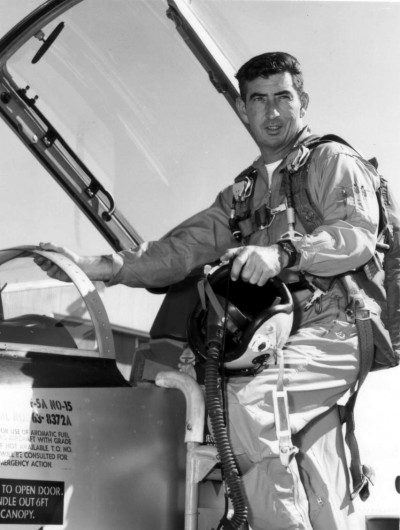Michael Adams (Michael James Adams)

Born in Sacramento, California, Adams graduated from Sacramento Junior College. He enlisted in the United States Air Force in 1950 and earned his pilot wings and commission in 1952 at Webb Air Force Base, Texas. He served as a fighter-bomber pilot during the Korean War, followed by 30 months with the 813th Fighter-Bomber Squadron at England Air Force Base, Louisiana and six months rotational duty at Chaumont Air Base in France. During his military career he was awarded: Air Medal, Air Force Commendation Medal, Korean Service Medal, United Nations Service Medal, National Defense Service Medal with 1 Bronze Service Star, Air Force Longevity Service Award with 4 clusters, Air Force Good Conduct Medal and Honts Trophy.
In 1958, Adams received an aeronautical engineering degree from the University of Oklahoma and, after 18 months of astronautics study at Massachusetts Institute of Technology, was selected in 1962 for the Experimental Test Pilot School at Edwards Air Force Base, California. Here, he won the Honts Trophy as the best scholar and pilot in his class. Adams subsequently attended the Aerospace Research Pilot School (ARPS), graduating with honors in December 1963. He was one of four Edwards aerospace research pilots to participate in a five-month series of NASA moon landing practice tests at the Martin Company in Baltimore, Maryland. In November 1965 he was selected to be an astronaut in the United States Air Force Manned Orbiting Laboratory program. In July 1966, Major Adams came to the North American X-15 program, a joint USAF/NASA project. He made his first X-15 flight on 6 October 1966.
Adams’ seventh X-15 flight, Flight 3-65-97, took place on 15 November 1967. He reached a peak altitude of 266,000 feet (81 km); the nose of the aircraft was off heading by 15 degrees to the right. While descending, at 230,000 feet (70 km) the aircraft encountered rapidly increasing aerodynamic pressure which impinged on the airframe, causing the X-15 to enter a violent Mach 5 spin. As the X-15 neared 65,000 feet (20 km), it was diving at Mach 3.93 and experiencing more than 15 g vertically (positive and negative), and 8 g laterally, which inevitably exceeded the design limits of the aircraft. The aircraft broke up 10 minutes and 35 seconds after launch, killing Adams. The United States Air Force posthumously awarded him Astronaut Wings for his last flight.
Born
- May, 05, 1930
- USA
- Sacramento, California
Died
- November, 15, 1967
- USA
- Johannesburg, California
Cause of Death
- aircraft accident
Cemetery
- Mulhearn Memorial Park Cemetery
- Monroe, Louisiana
- USA



